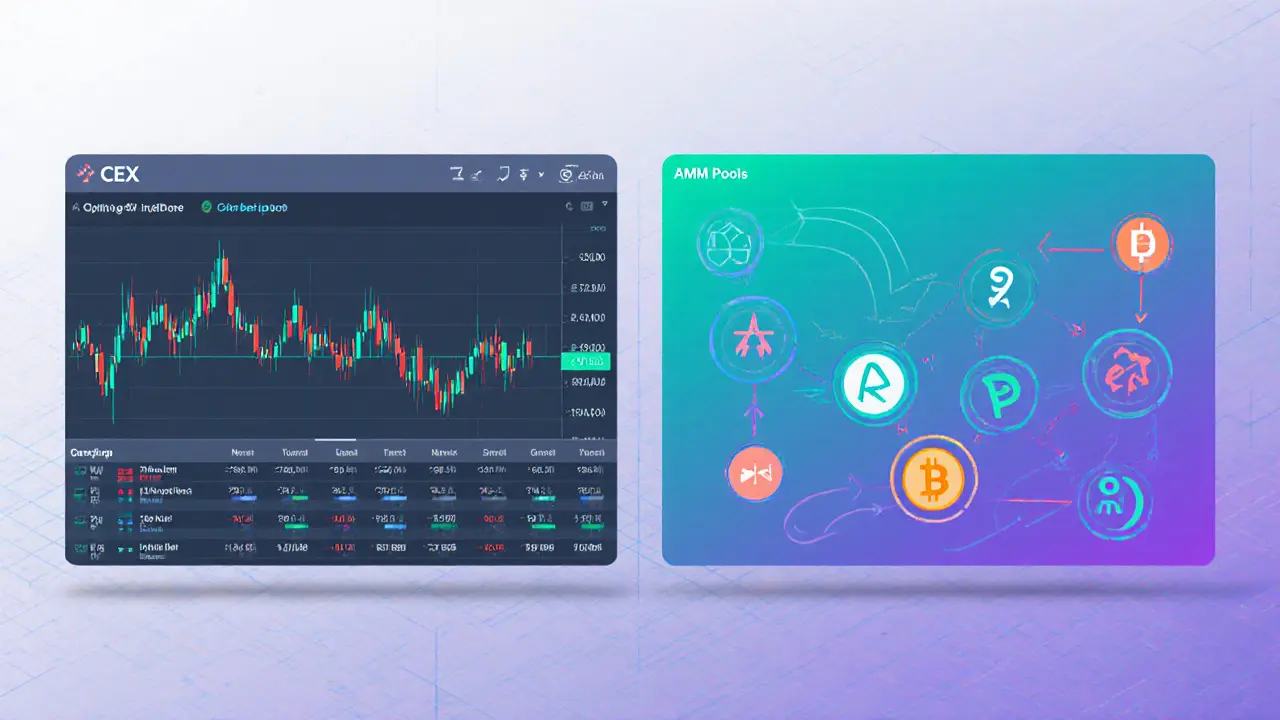Crypto Liquidity: Why It Matters and How to Navigate It
If you’ve ever tried to buy Bitcoin and saw the price jump, you’ve felt the impact of crypto liquidity. When you read about it, you’ll notice a clear definition: crypto liquidity, the ease with which a cryptocurrency can be bought or sold without causing a large price move. Also known as market fluidity, it decides whether a small trade nudges the price or slides right through. Understanding this concept helps you avoid surprise slippage and plan smarter entries.
Key Pieces of the Liquidity Puzzle
One of the biggest building blocks of crypto liquidity is the liquidity pool, a reserve of two or more tokens that lets users swap instantly on a decentralized platform. Liquidity pools power most DEX trades and give price stability to otherwise thin markets. Another crucial factor is market depth, the volume of buy and sell orders sitting at each price level in an order book. Deep order books absorb larger orders with minimal price impact, while shallow depth creates wild swings. Finally, a decentralized exchange, a platform that matches trades directly from users' wallets without a central authority ties everything together, letting pools and order books work in harmony.
These entities don’t exist in isolation. Crypto liquidity encompasses liquidity pools, market depth and DEXs, forming a network where each piece supports the other. For example, a DEX relies on pools to offer instant swaps, and those pools need enough depth to keep slippage low. Meanwhile, market depth influences how much price drift a pool experiences when large traders move in. In short, better liquidity pools lead to richer market depth, which in turn makes DEX trading smoother.
Traders often ask how to measure liquidity. The most common metric is the spread – the difference between the best bid and ask price. A tight spread usually signals high liquidity. Volume is another clue: consistently high 24‑hour trading volume means many participants are providing orders, which strengthens depth. Some platforms also publish a liquidity score that blends pool size, token pair correlation and recent swap activity. Knowing these numbers lets you pick assets that won’t eat into your profit with hidden fees.
Speaking of fees, liquidity isn’t just about price movement; it’s also about cost. On many DEXs, you pay a small % of the trade to the pool’s liquidity providers. This fee compensates them for the risk of impermanent loss – the loss that happens when the relative price of the pooled tokens changes. Understanding how fees and impermanent loss interact helps you decide whether to provide liquidity yourself or just trade through the pool.
If you’re looking to boost liquidity for a new token, the roadmap usually includes three steps: seed the pool with a popular pair (often ETH or USDC), market the pool to attract other traders, and lock a portion of the supply to signal confidence. Projects that succeed at this often see a virtuous cycle: more liquidity draws more traders, which deepens market depth, which then attracts even more liquidity providers.
Beyond DEXs, centralized exchanges also play a role. They aggregate order books from many users, creating deep markets for major coins. However, they charge higher withdrawal fees and retain custody of your assets. Understanding the trade‑off between centralized depth and decentralized control is part of mastering crypto liquidity.
All these ideas set the stage for the articles below. You’ll find guides on licensing that affect liquidity providers, deep dives into low‑liquidity tokens like PREME, reviews of exchanges that offer different liquidity experiences, and practical tips for measuring and improving market depth. Dive in to see how each piece fits into the bigger liquidity landscape.

Liquidity on DEXs vs Centralized Exchanges: Key Differences and How to Choose
Nov 17, 2024, Posted by Ronan Caverly
Explore how liquidity works on DEXs versus centralized exchanges, covering slippage, speed, incentives, risks, and tips for choosing the right platform.
MORESEARCH HERE
Categories
TAGS
- decentralized exchange
- crypto exchange review
- cryptocurrency
- crypto coin
- CoinMarketCap airdrop
- smart contracts
- tokenomics
- cryptocurrency exchange safety
- crypto exchange
- cryptocurrency airdrop
- crypto airdrop
- cryptocurrency exchange
- crypto airdrop guide
- blockchain token distribution
- DeFi
- crypto exchange scam
- crypto airdrop 2025
- Ethereum
- cross-chain interoperability
- ERC-20
